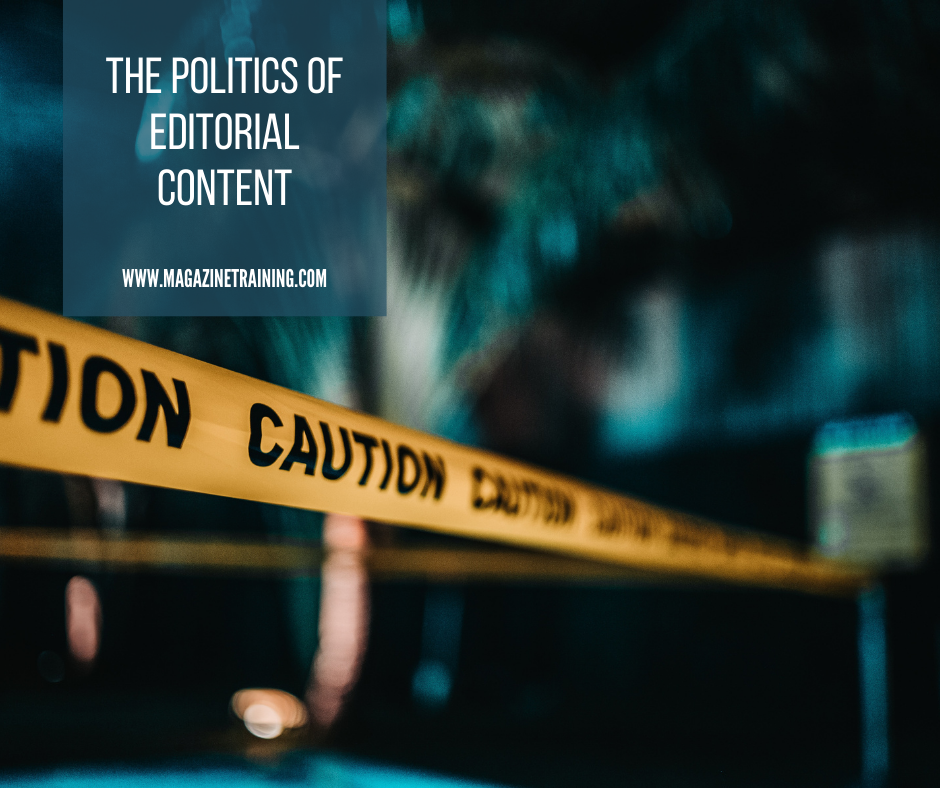
In an ideal world, editorial judgment is based on intersection of the needs of the audience, the goals of the organization and the merit of the content. However, from time to time, there are other factors that enter into the editorial grid. An article or topic that would not be used based on needs, goals or quality might be published based on who wrote the article. For instance, a relative of a board member or donor might write content that needs to be published, even if it wouldn’t make it based on objective criteria. Or a high-profile author who can bring a new audience to a publication might write something that wasn’t what the editorial team was expecting. The editor can’t reject the piece because of who wrote it, and it even gets tricky asking for too many revisions. So the editor runs the piece and hopes for a positive response.
Editorial politics was a topic of discussion during a break at a conference where I interacted with peers in the industry. We came up with a variety of ways to minimize the negative aspects of including such content. One idea was to limit word count on such “must publish” pieces and put something else compelling on the same page. Design is another way to spice up an article that is mediocre. By adding strong images, the, page has more appeal. Sometimes the addition of a side-bar can clarify content that is vague. Finally, we just put it in the publication and hope that the strength of the other 95% of our content carries the reader interest.
It is easy to say that you would never compromise your editorial objectives by including content that didn’t meet stated criteria. But in the real world, there are a variety of constituents and decision-makers who have influence. Certainly, if you compromise quality regularly and extensively, you risk losing your audience. On the other hand, if you are stubborn about not including any friends of the organization in print, you can also risk losing influence as an editor. Navigating the politics of publication is a balancing act, but fortunately, in my experience, it is an infrequent issue.
Published with permission. Written by Carla Foote of Fine Print Editorial.
Related posts
Magazine Training International’s mission is to encourage, strengthen, and provide training and resources to Christian magazine publishers as they seek to build the church and reach their societies for Christ.

